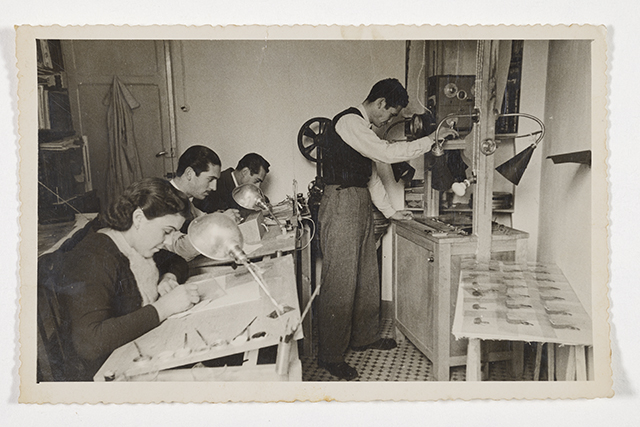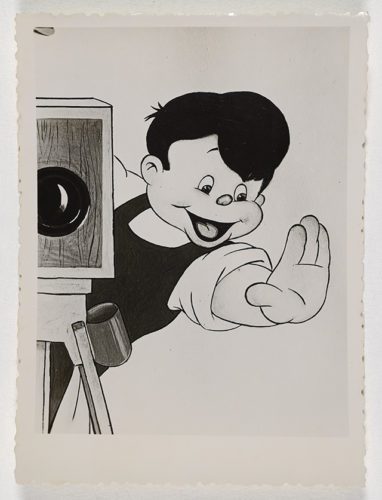Like Salvatore Di Vita in Cinema Paradiso, Joaquín Pérez Arroyo discovered his love of cinema by accident. Born in the town of Lucena in the province of Cordoba in 1895, Pérez Arroyo was a lover of this art in all its formats. He came to Valencia to do his military service, where he met Teresa Maset, who would later become his wife, and would subsequently settle here the remainder of his life. The Civil War saw him working as an usher in the Benimàmet cinema out of sheer economic survival, while he painted fans for the militia women.

With the war over at the age of 46 and no real trade or skills to speak of, Pérez Arroyo began a self-taught career in the world of animated films. Out of a family-run studio that was basically disconnected from the Catalan and Madrid trends of the time, he created a sensational film heritage in the Golden Age of Spanish animation. Almost 80 years later, Raúl González Monaj,, animation expert at Campus Gandia of the Universitat Politècnica de València, is at work restoring this legacy.
70 RESTORED FILMS
Thanks to the work of Monaj, the coordination of the Valencia Film Library, and the collaboration of the Spanish, Catalan and Navarre film libraries, and the Ibi Toy Museum, the research project that was launched in 2017 has already restored 70 of his more than 110 films. This compilation has been included by the Institute of Cinematographic Sciences (ICAA) in the NEW SPANISH FILMS/Films from our archive catalog that were presented in the current MARCHÉ DU FILM, one of the parallel activities of the Cannes Festival.

A pioneer and forerunner, Pérez Arroyo produced a copious production of animated short films between 1941 and 1959 for the Valencian brands Juguetes Payá and Industrias Saludes, that, thanks to him, became film producers and manufacturers of toy projectors. He designed and patented six different models of these toy projectors and created a hundred films for home screening. He was a self-taught forerunner who made the transition to television animation.

In addition, Pérez Arroyo produced seven 35mm animated short films for the Compañía Industrial de Film Español SA, known as CIFESA, the most important Spanish film production company at the time, which revolved around a character named Quinito. And he worked for Publicidad Levante and his own company, PASSA.

A MAN AHEAD OF HIS TIME
Since 2012, Raúl González Monaj has been interested in the work of this animator from Cordoba based in Valencia. Monaj gained access to the material thanks to Pérez Arroyo’s family. He also found original films in flea markets, purchased some online and received the selfless collaboration of several owners. Some of the animated short films found were very deteriorated and the restoration work on the part of the film library proved very laborious.
The result of this research is the project website, which details how “Pérez Arroyo used resources and techniques that were typical of high-quality animation, such as camera movements (panning, traveling, tracking, etc.), animated backgrounds, drop shadows, various shots, sweeps and even animated special effects.”
October 28, World Animation Day, will see the premiere of the documentary titled “Pérez Arroyo: alma de animador” (soul of the animator), produced by Admirable Films, with the support of the IVC-Valencian Audiovisual Institute.
His legacy, virtually unknown until now, has come to light to reveal the work of a man that was ahead of his time and, without a doubt, an essential Valencian reference in the Golden Age of Spanish animation.
More inforamtion: http://grupoanimacion.upv.es/elcinedeperezarroyo/
Source: Luis Zurano, Scientific Communication Unit
of the Universitat Politècnica de València
You can follow him on Twitter @luiszurano

